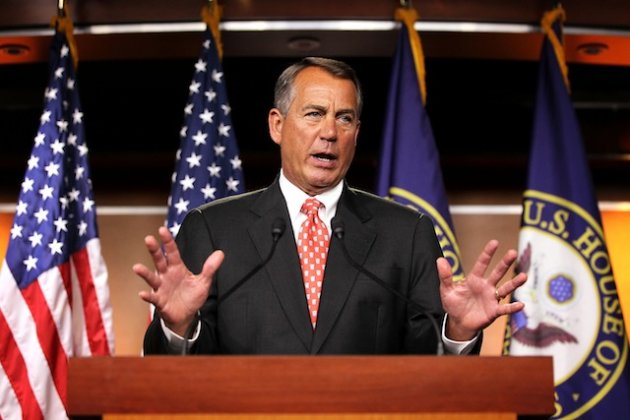LOS ANGELES (TheWrap.com) – (Spoiler warning: Don’t read this if you don’t want to know what happened this season on “The Walking Dead” or in the comics. We’re also giving some general details about Sunday’s midseason finale.)
As eventful as this season of “The Walking Dead” has been, they’re just getting to the best stuff.
Showrunner Glen Mazzara tells TheWrap that Sunday’s midseason finale will include several intense faceoffs, including one between Michonne and The Governor’s zombified daughter, Penny. It will also introduce Tyreese (“The Wire” star Chad Coleman), one of the most beloved characters in the Robert Kirkman comics that inspired the series. And Daryl will try desperately to reunite with his brother Merle, who has moved to Woodbury and become one of The Governor’s chief lieutenants.
The episode also features an attack on Woodbury by some “bloodthirsty killers” – also known as Rick, Daryl, and the other survivors we’ve been rooting for throughout the show.
Mazzara also talked with us about the season so far, including a horrific encounter between Maggie and the Governor, and how much we should empathize with zombies.
TheWrap: What can you say about the midseason finale?
Mazzara: It all comes to a head. We’ve spent this season introducing all these new characters into the world, introducing the governor and re-introducing Merle and Michonne, and getting these two groups face to face.
The Governor does despicable things, but in his mind, he’s the good guy.
I think you’ll see that in this midseason finale. The Governor is able to say that they’re attacked by bloodthirsty killers. He can certainly make the case that Rick and his group are killers. And if you look at it objectively, they are. They took over the prison, most of those prisoners are now dead, and the people of Woodbury are just peace-loving survivors. The Governor is definitely able to pain Rick as a villain. And in doing that, he can hopefully mobilize the people of Woodbury to war.
He’s spared the people of Woodbury from seeing some ugly stuff. Is he doing it for a noble reason – to preserve their innocence – or is it so he can exploit them?
I think it’s so he can better exploit them. He feels that the people of Woodbury are sheep. He’s not interested in what they think. He just wants them to speak well of him. They are there to be ruled and he’s there to rule by any means necessary.
I feel like Glen and Maggie are our audience surrogates at this point, our pals, and they were both horribly abused. You’ve gotten a lot of feedback from fans relieved that The Governor stopped short of raping Maggie in the last episode.
He’s killed National Guardsmen. Think of all the stuff that he’s done. And the line he’s crossed and the act from which he cannot be redeemed is that he made our beloved Maggie take off her shirt and bra.
It’s very interesting, and I don’t think that would be the case if people did not care about that character as much as they do.
Why did he stop short of raping Maggie?
He didn’t rape Maggie because she wouldn’t have been broken by it. She says ‘Do what you’re gonna do, and then go to hell.’ So then to do that would have been torture for torture’s sake. It wouldn’t have gotten him the information he wanted. So he thinks about that and thinks, this isn’t going to achieve my agenda. He moves on. He brings her in, topless, implying that she was raped, to Glen, and he puts the gun to Glen’s head. … And she gives up that information.
One change you made is that in the comics, Michonne is horribly raped and tortured by the governor.
She still may be. But I think it’s important to say that this is a character who is willing to do whatever he wants or thinks it takes to achieve his goals. … We know he’s capable of rape. We know he’s capable of murder. He knows where the prison is, and he is coming for them. He collects heads. He’s the most dangerous character in this world and he is furious.
Also last episode, we saw an effort to see how much human memory remains with walkers when they transform. How much should we empathize with walkers?
I think the show has always been in a sense compassionate to zombies. The first zombie that we met was bicycle girl and Rick says ‘I’m sorry this happened to you.’ … So I do think there’s something in the DNA of this TV show in which the frightening creatures – our worst fears, walking the earth – are also individuals and people. In a way, they’re the damned. They’ve lost their souls. They’re like a ghost that doesn’t realize that they’ve passed on and can’t make it to the light. They’re dead but they’re not dead and it’s a type of curse. It comes out of a long history of horror movie. There is some type of compassion even though there can’t be.
Does it seem like people who care about the zombies are suckers?
That’s the question. What is the right way within this world? You have people who retain their humanity, like Dale, end up eaten. People who lose their humanity, like Shane, end up dead too. So in a way it’s irrelevant. It’s like a state of war in which anyone can be killed at any time. But there’s a random quality to life and death and that’s what makes it so frightening. No matter what you do, you can still suffer a horrific fate. Who would ever assume that Carol would still be alive at this point? And she is.
She’s a survivor, but she’s not Michonne. And Carol is just as likely to live or die as Michonne.
TV News Headlines – Yahoo! News











